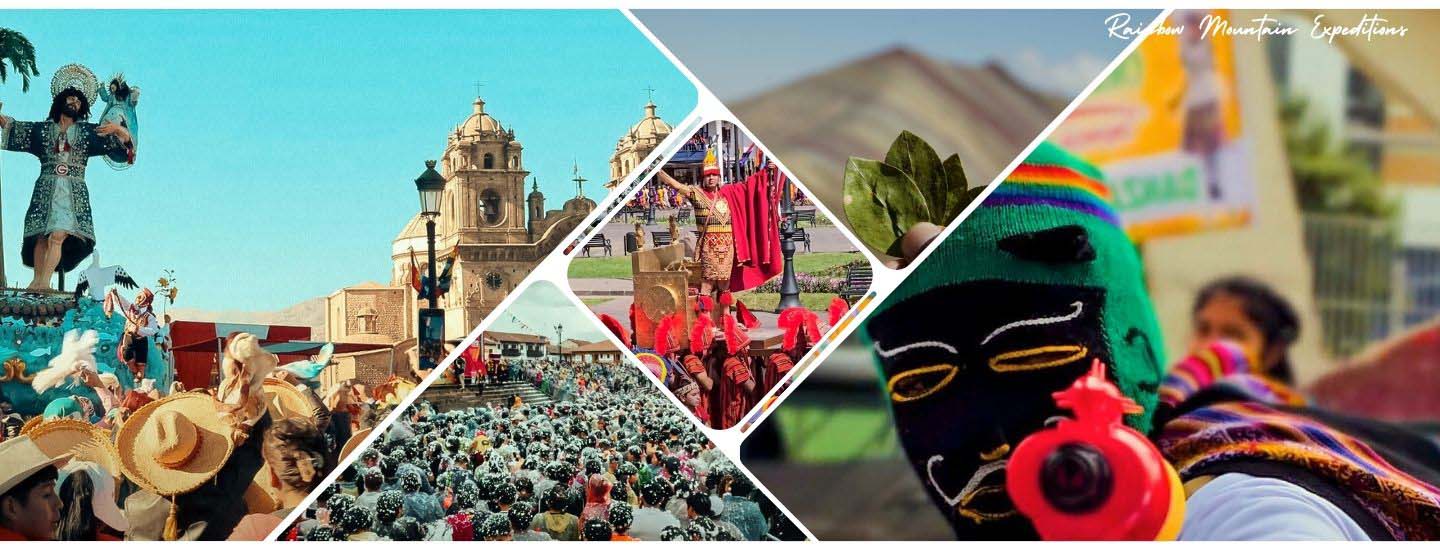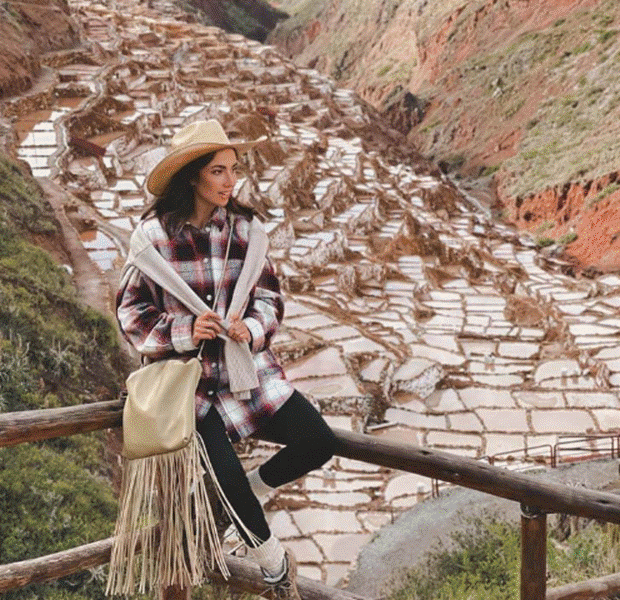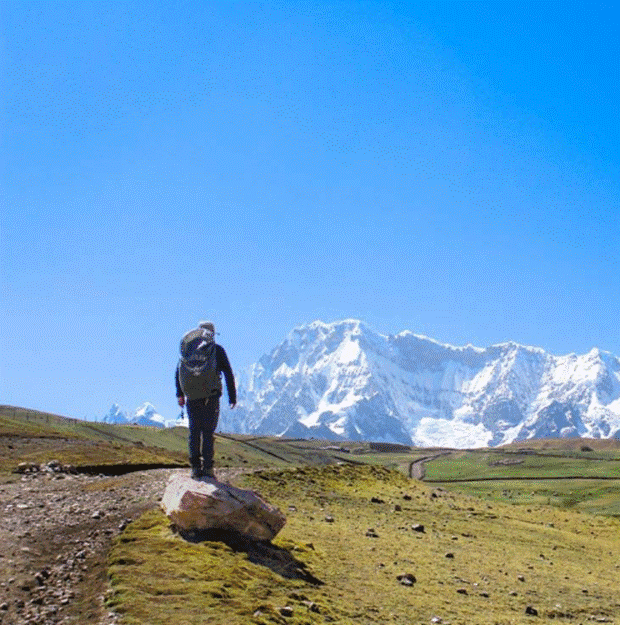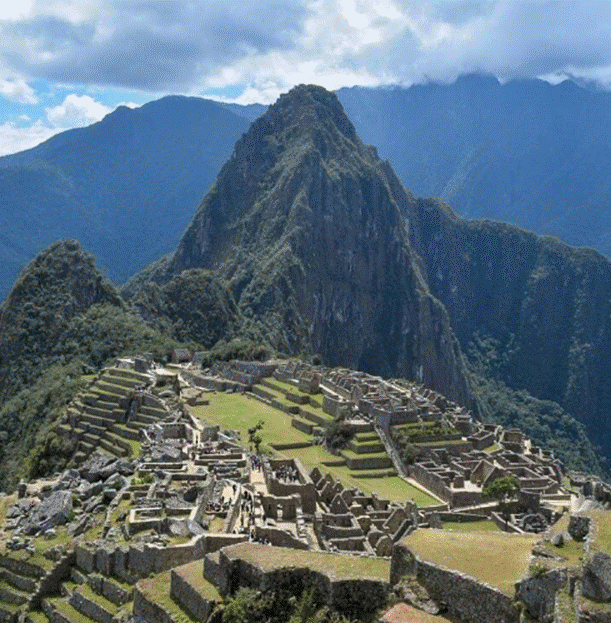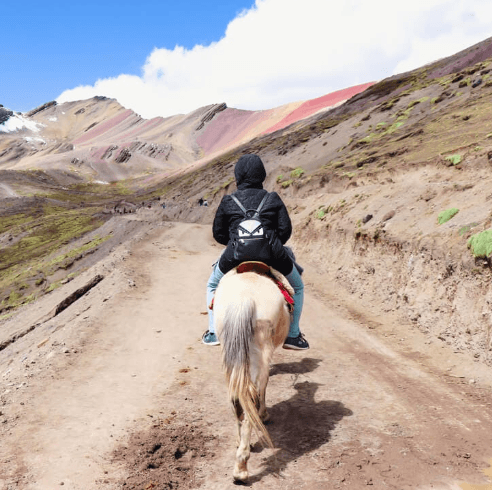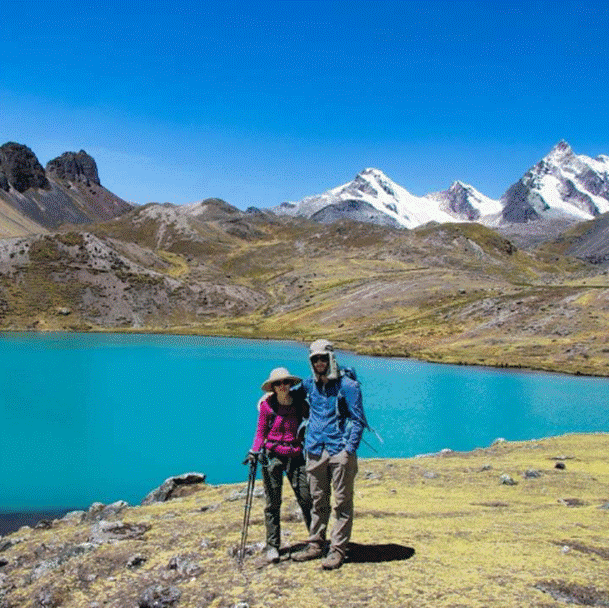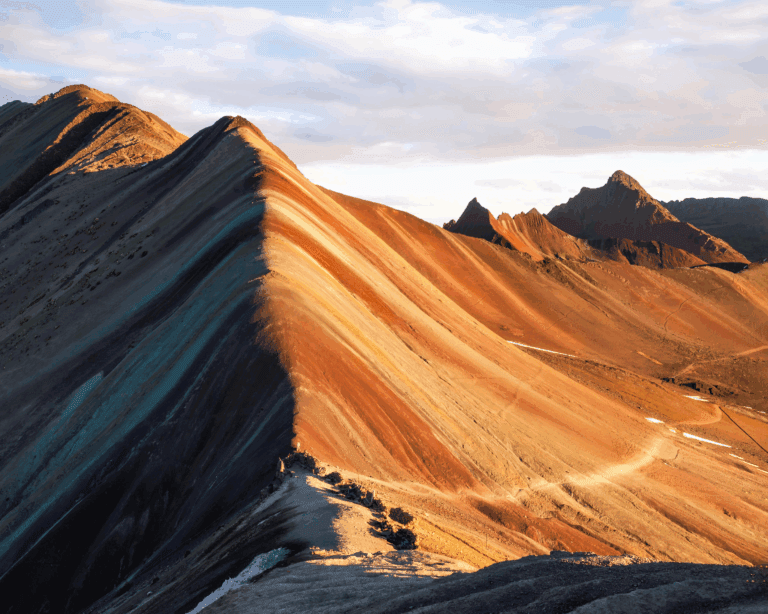The Most Important Festivities in Cusco
If there’s something that truly defines Cusco, it’s its festivities. Each one carries deep meaning and a unique energy that connects you with the history, traditions, and people of this land. From colorful celebrations filled with dance to solemn rituals of devotion, Cusco’s festivities are a chance to experience the true essence of the region. Whether it’s paying homage to the sun during Inti Raymi, offering thanks to Pachamama, or joining religious processions full of faith, each festivity is a window into a culture that has endured for centuries. If you’re looking for an authentic experience, these celebrations don’t just let you be a spectator — they invite you to become part of a community that lives its identity with passion.
1. Cusco Carnivals
- Date: February – March (according to the liturgical calendar)
Carnival in Cusco is celebrated with great enthusiasm because it brings people together and keeps tradition alive. It’s not just a “party” — it’s a way of celebrating who we are. Everyone joins in: kids, teens, elders, people from both the countryside and the city. What makes it special is that every dance, every costume, carries history; it’s not something put on for tourists — it’s genuine, from the heart.
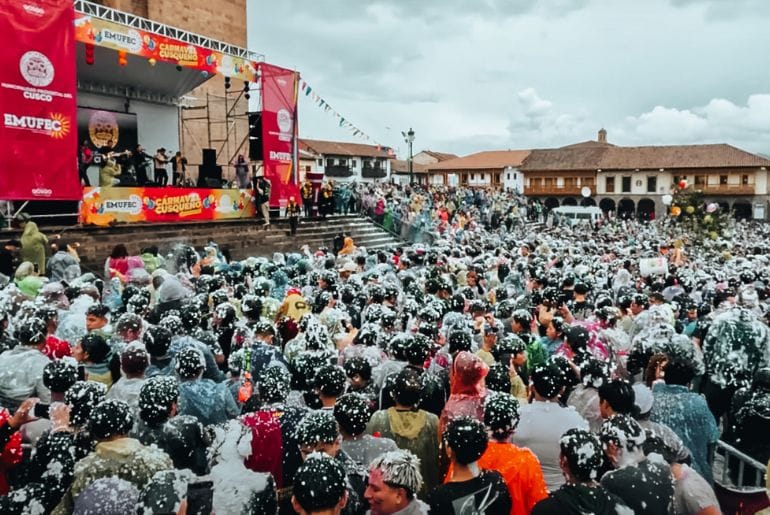
And of course, the yunza is never missing: people dance around a tree filled with gifts until it falls, symbolizing new life. There’s delicious food, traditional chicha to drink, and a whole lot of laughter. That’s how Cusco lives its carnival: with joy, respect for our roots, and pride in who we are.
2. Lord of the Earthquakes (Señor de los Temblores)
- Date: Holy Monday – Holy Week (March or April)
The Señor de los Temblores is one of the most important religious symbols in Cusco. This figure of the crucified Christ has a unique history. It’s said that in the 16th century, the people called upon him during a massive earthquake, and ever since, he’s been seen as the protector against tremors. Every year on March 15th, his feast is celebrated with a massive procession through the streets of the historic center, where thousands gather to show their devotion and ask for protection.
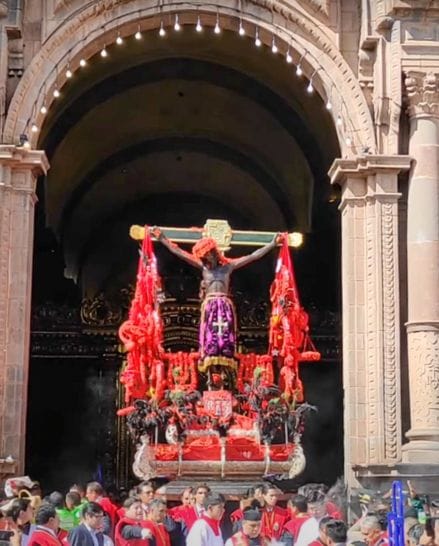
What makes this event so powerful is the deep bond between the people and the figure. The Señor de los Temblores isn’t just a religious icon — he’s part of Cusco’s identity. For many, he represents faith, resilience, and a connection to the city’s long history. It’s a day of prayer, a moment to remember that even when the earth shakes, the people’s faith remains unshaken.
3. Cruz Velacuy – Festival of the Crosses
- Date: May 3rd
Cruz Velacuy, or the Festival of the Crosses, is another celebration full of tradition and deep devotion, especially in rural areas. It takes place on May 3rd and holds special meaning in Cusco and throughout the Andes. People place beautifully decorated crosses with flowers on their homes, in their fields, and on mountain peaks to ask for protection and blessings. These crosses don’t just represent religious faith — they also symbolize a connection with the land and nature.
What’s most impressive is how the celebration brings people together to dance, sing, and make offerings around the crosses. It’s a vibrant, colorful event where communities wear traditional outfits, share food and music, and of course, enjoy some traditional chicha de jora. It’s faith in action — joyful, rooted in the earth, and shared as a community.
4. Lord of Qoyllur Rit’i
- Date: Late May or early June
The Señor de Qoyllur Rit’i is one of the most powerful and profound festivals celebrated in Cusco. It takes place in May on the Sinakara glacier, near Ocongate, and it’s known as the “Festival of the Lord of Qoyllur Rit’i.” This celebration blends deep Catholic devotion with ancient Andean beliefs and draws thousands of pilgrims who climb the mountain to honor the Lord, who is seen as the protector of the earth and of people’s health.
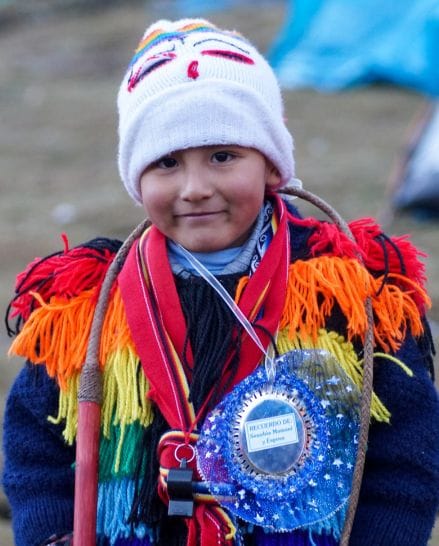 Pilgrim child who climbs the mountain to honor the Lord
Pilgrim child who climbs the mountain to honor the Lord
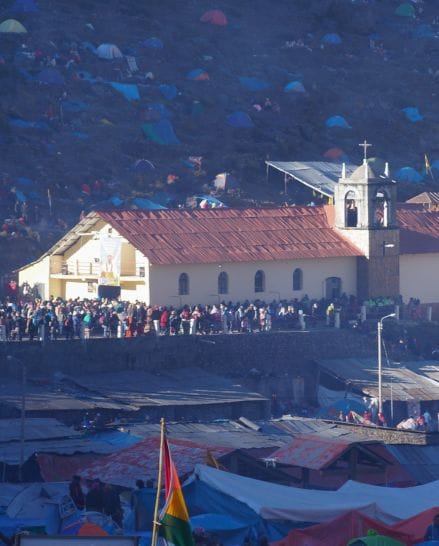 The Sanctuary of the Lord of Qoyllur Rit’i
The Sanctuary of the Lord of Qoyllur Rit’i
What makes this celebration so special is the pilgrimage itself. Devotees hike up the glacier to altitudes over 4,700 meters above sea level, carrying crosses and flags, and praying for miracles and blessings. It’s a clear fusion of faiths: the Lord of Qoyllur Rit’i is venerated as a Christian figure, but the mountain and the site have been sacred to Quechua communities since pre-Inca times. It’s a spiritual journey like no other — where nature, faith, and tradition all meet in the snow-covered silence of the Andes.
5. Corpus Christi
- Date: June (60 days after Holy Thursday)
Corpus Christi in Cusco is one of the most grand and solemn religious events on the calendar, celebrated 60 days after Holy Week. It’s a deeply spiritual celebration, during which the city fills with faith, color, and tradition. The festival honors the Body of Christ, and Cusco’s main churches bring out their most sacred images in a major religious procession.
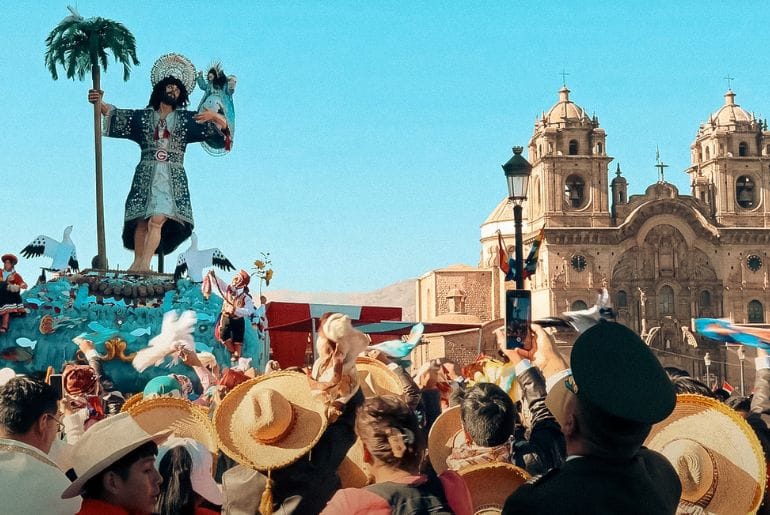
What makes Cusco’s Corpus Christi unique is the way Catholic faith blends with local cultural expressions. Streets are decorated with beautiful altars made of flowers and candles, and each neighborhood’s cofradía (religious brotherhood) carries its saint to the Cathedral. The procession is accompanied by traditional music, dances, and Andean chants. You’ll often see people wearing regional costumes, such as those from the Danza de los Qhapaq Ñan or the Danza de las Negritas, giving this deeply religious event a distinct and unmistakable Andean soul.
6. Cusco Festivities / Jubilee Month
- Date: All of June
The Cusco Festivities, also known as Jubilee Month, are the most important celebration in the city, taking place every year throughout the month of June. It’s a tribute to the founding of Cusco — considered the navel of the world — and is celebrated with a full calendar of cultural, religious, and festive activities that showcase the best of the city’s history, traditions, and identity.
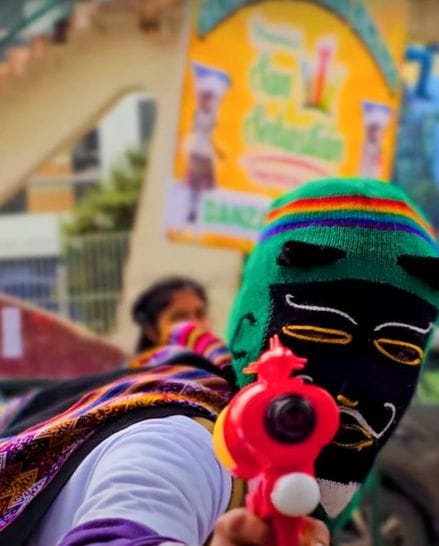
The highlight of the month is Inti Raymi, the ancient Inca Festival of the Sun, held on June 24th. On this day, thousands gather to witness a reenactment of the sacred ceremony in Sacsayhuamán, complete with dances, music, and rituals that honor the sun — the source of all life and energy. Throughout June, Cusco becomes a stage for parades, concerts, food festivals, and cultural events that bring the city to life.
7. Inti Raymi – Festival of the Sun
- Date: June 24th
Every year on June 24th, Cusco comes alive with Inti Raymi, the Festival of the Sun — the city’s most iconic and time-honored celebration. This ancient tradition marks the start of the Inca agricultural calendar and serves as the highlight of Jubilee Month.. This festival honors the Sun God, the most revered deity of the Incas, with a dramatic reenactment of the original ceremony held at Sacsayhuamán.
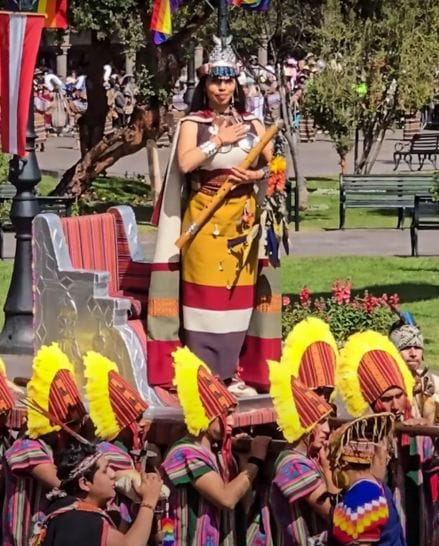 Coya Inca: woman with the greatest power in Tahuantinsuyo
Coya Inca: woman with the greatest power in Tahuantinsuyo
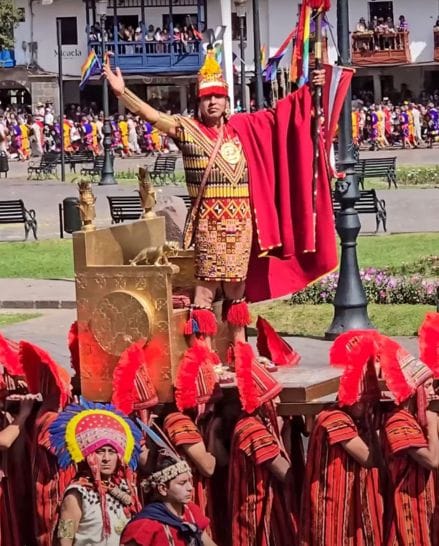 Sapa Inca: Representative of the Sun God and highest Inca authority
Sapa Inca: Representative of the Sun God and highest Inca authority
The event includes traditional music, dances, offerings, and rituals, with thousands of people gathering to witness actors playing the Inca emperor and priests in full ceremonial regalia. Inti Raymi isn’t just a spectacle — it’s a powerful expression of cultural pride and a living tribute to the Inca worldview that still resonates in Cusco today.
9. Lord of Huanca
- Date: September 14
The feast of the Lord of Huanca is celebrated in San Sebastián, Cusco, on September 14. It is one of the most important festivities in the region, in honor of the Lord of Huanca, a religious image that, according to tradition, has miraculous powers.
The celebration includes a large procession where thousands of devotees accompany the Lord of Huanca from his sanctuary on the hill to the city of Cusco, a journey that represents the people’s faith and devotion. In addition to the religious aspect, there are traditional dances, music, and feasting, making this celebration both a spiritual and cultural event. It is an occasion to honor the figure of the Lord of Huanca as a protector and miracle worker.
10. Pachamama Day
- Date: August 1st
On this day, communities perform rituals and offerings to Pachamama to ask for prosperity, health, and good harvests. They prepare “ch’alla” offerings that consist of food, drinks, and coca leaves, which are placed on the ground or in the fields, and are dedicated with a prayer. Families also perform rituals at home to thank Mother Earth for the blessings received.
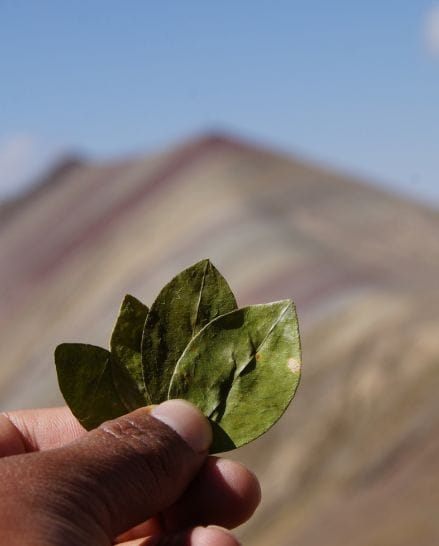 Pachamama Day
Pachamama Day
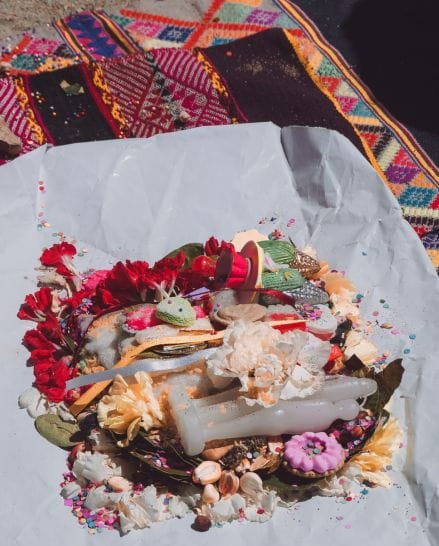 Offering to the earth
Offering to the earth
It is a celebration deeply connected to nature, where ancestral Andean beliefs blend with the practices of rural communities, highlighting the respectful and reciprocal relationship that exists with the land.
11. All Saints’ Day
- Date: November 1st and 2nd
During this day, families prepare altars in their homes to honor their deceased loved ones, placing offerings such as flowers, candles, food, and the traditional breads and fruits. It’s common to see an atmosphere of reflection and faith in the cemeteries, where graves are cleaned and prayers are offered.
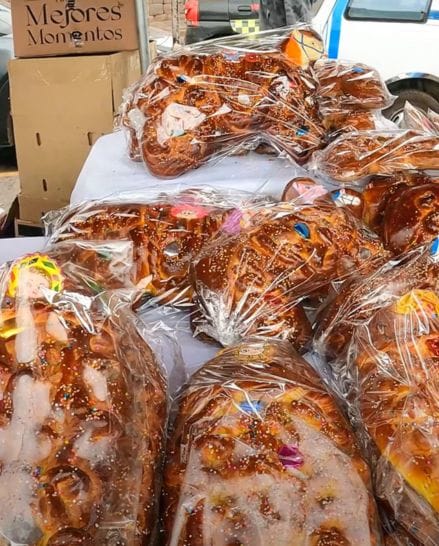
All Saints’ Day is not only a time to remember loved ones who have passed away, but also a manifestation of respect and connection with the ancestors, honoring both Catholic tradition and pre-Inca beliefs about life after death.
12. Santuranticuy
- Date: December 24th
Santuranticuy is one of the most traditional festivities in Cusco, celebrated on December 24. Known as the “market of saints,” it is a major display of Cusco’s folk art. On this day, the Plaza de Armas fills with vendors selling figurines of saints, virgins, and nativity scenes made of clay, wood, and other materials crafted by local artisans.
In addition to being a religious fair, Santuranticuy is also a chance for Cusqueños to buy their nativity figures, a very common custom in the region. The atmosphere is festive, full of music, dances, and colors. It’s a moment where religiosity and popular art come together, and people gather to celebrate the Christmas spirit in a very unique and traditional way.
13. Summary
If you’re in Cusco, you should take the chance to experience the festivities, because they’re the best way to feel the true essence of the place. Each celebration has its own flavor and lets you see how people live their culture. It’s not just a party — it’s a way to connect with the traditions, the faith, and the energy of the people. You’ll walk away with a unique experience that will stay with you. Taking part in one of these Cusco festivities is a way to live and enjoy what Cusco has to offer, just like the locals do.
Related Posts:
Legends and Myths of the Origin of the Inca Empire
What to see in Cusco: A Day in the Heart of the Inca Empire
Attractions in Cusco that you may not have known existed
The Best Time to Visit Cusco, Peru
Cusco Tourist Ticket Explained (Boleto Turístico)

